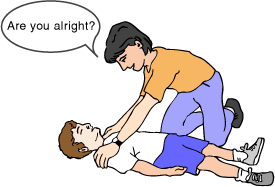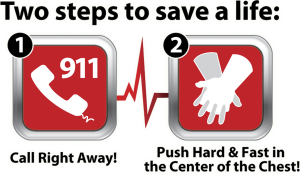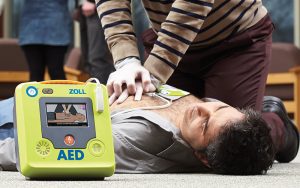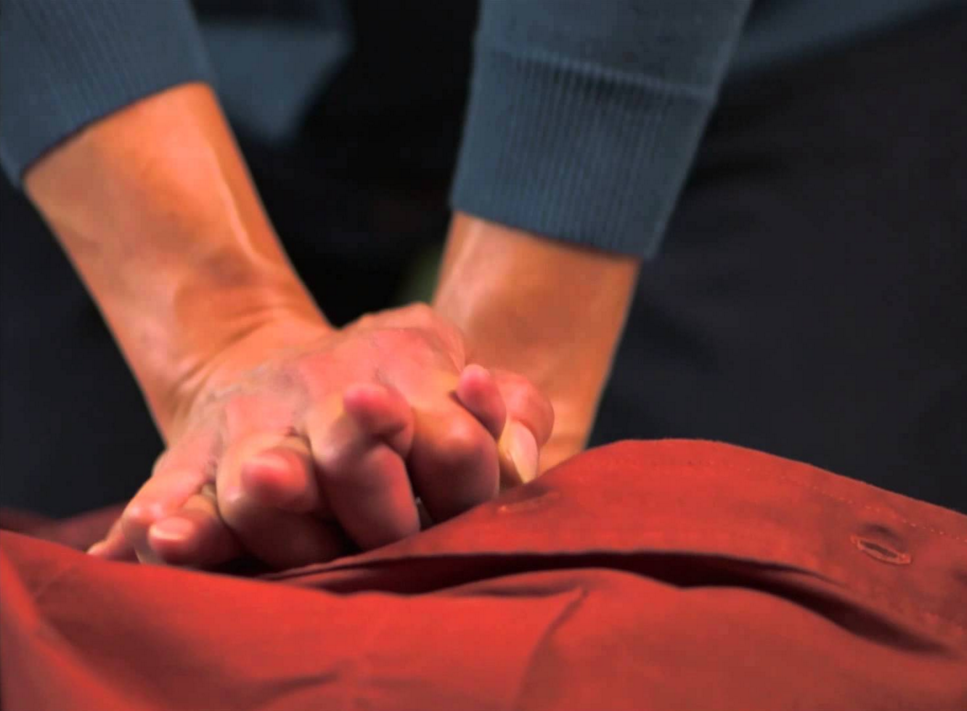Introduction:
Emergencies can strike at any moment, and the ability to respond swiftly can be the difference between life and death. This article aims to guide you through the essential steps of performing hands-only CPR and utilizing an Automated External Defibrillator (AED). Equipping yourself with this knowledge empowers you to be a potential lifesaver in critical situations.

Understanding Hands-Only CPR:
Checking Responsiveness:
- Begin by tapping the person’s shoulder and shouting, “Are you OK?” Simultaneously, check for signs of normal breathing.
- If there’s no response and normal breathing is absent, immediately call 911. Initiate Hands-Only CPR.
Comparison: While Hands-Only CPR is suitable for many cases, it’s crucial to note exceptions. In situations involving drug overdose, near-drowning, or an unwitnessed cardiac arrest, a combination of chest compressions and rescue breathing (conventional CPR) is recommended.

Performing Chest Compressions:
- Place the heel of your hand on the center of the person’s chest.
- Put the heel of your other hand on top, lacing your fingers together. Keep your arms straight and your shoulders directly over your hands.
- Push hard and fast, compressing the chest at least 2 inches. Maintain a rate of at least 100 compressions per minute.
- Allow the chest to rise completely before pushing down again.
Comparison: Hands-Only CPR simplifies the process, making it accessible to more people. Ensure a steady and consistent rhythm, focusing on the depth of chest compressions.

Stopping Chest Compressions:
- Stop only when the person starts breathing normally.
- If a trained responder or emergency help arrives, let them take over.
- Cease if you become too exhausted to continue.
- If an AED is available, use it according to instructions.
Comparison: The decision to stop chest compressions is critical. While the primary goal is to maintain a continuous and effective rhythm, specific circumstances necessitate halting the process. Explore other health Problems

Utilizing an Automated External Defibrillator (AED):
Using an AED:
- Turn on the AED and follow the step-by-step instructions provided.
- Wipe the person’s chest dry, attach the pads, and plug in the connector if required.
- Ensure no one is touching the person and announce, “Clear” to alert others to stay back.
- Push the “Analyze” button if necessary.
- If a shock is advised, press the “Shock” button.
- Resume chest compressions and follow AED prompts.
Comparison: AEDs are designed to guide even untrained individuals through the process. The automated nature of AEDs reduces the margin of error, making them invaluable in time-sensitive situations.

Conclusion:
In emergencies, every second counts, and having the knowledge of hands-only CPR and AED usage can be the key to saving a life. The American Heart Association provides an instructional video for hands-only CPR, reinforcing the simplicity and effectiveness of the technique. Remember, staying calm, acting decisively, and following these steps can make a significant impact during critical moments.




